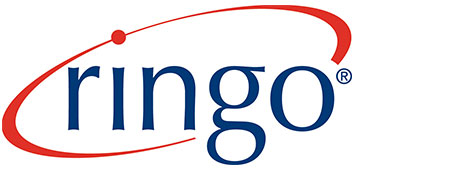VMS 101
VMS FAQS
Make the Most of Your VMS Partnership With Our Frequently Asked Questions
Contact UsWhat is a VMS?
A Vendor Management System (VMS) is a cloud-based platform that helps organizations manage their contingent workforce, including staffing vendors, temporary workers, and contract labor. Typical features of a VMS include job order requisition, distribution, automated timesheet submission and review, consolidated billing, and diverse reporting capabilities according to the user’s needs. Some vendor management systems are vendor-neutral which allows the organization to function independently of a parent staffing firm.
How does a VMS improve workforce management?
A VMS enhances workforce management by centralizing data, automating workflows, and providing real-time insights into workforce operations. It helps organizations reduce costs, improve efficiency, maintain compliance, and optimize vendor performance.
What are the benefits of utilizing a VMS?
A VMS provides numerous benefits, including:
- Cost Savings: Standardized rate structures, reduced administrative costs, and increased financial visibility help lower labor expenses.
- Efficiency & Automation: Streamlined processes for job requisitions, approvals, credentialing, and invoicing reduce manual effort and time-to-fill positions.
- Compliance & Risk Mitigation: Ensures all workforce members meet regulatory and licensing requirements through automated tracking and alerts.
- Improved Vendor Performance: Tracks vendor metrics, enforces service-level agreements (SLAs), and provides transparency into performance benchmarks.
- Real-Time Data & Analytics: Customizable dashboards and reports offer insights into labor trends, cost analysis, and workforce optimization.
- Scalability & Flexibility: Supports diverse staffing needs, including locum tenens, per diem shifts, and full-time placements across multiple locations.
How does a VMS help with cost savings?
A VMS reduces labor costs by improving visibility into contingent workforce spending, enforcing standardized rate structures, and providing data-driven insights for cost optimization. It also eliminates manual processes, reducing administrative overhead.
What industries benefit most from a VMS?
A VMS is beneficial across multiple industries, including healthcare, IT, finance, manufacturing, and logistics. In healthcare, for example, it streamlines credentialing, shift scheduling, and compliance tracking for locum tenens, nurses, and allied health professionals.
How does a VMS ensure compliance with industry regulations?
A VMS tracks credentialing, licensing, background checks, and labor law compliance in real-time. It provides automated alerts for expiring certifications, ensuring all workforce members meet regulatory requirements such as HIPAA, Joint Commission standards, and state-specific mandates.
Can a VMS integrate with other systems?
Yes, modern VMS platforms offer seamless integrations with applicant tracking systems (ATS), enterprise resource planning (ERP) software, payroll systems, and other workforce management tools to ensure a smooth and efficient workflow.
How does a VMS improve vendor relationships?
A VMS promotes transparency and accountability by standardizing vendor performance tracking, ensuring fair job distribution, and offering real-time reporting. It fosters stronger vendor partnerships by providing clear insights into contract terms, job fulfillment rates, and compliance metrics.
Does a VMS support different types of staffing models?
Yes, a VMS supports various staffing models, including temporary staffing, per diem shifts, travel assignments, locum tenens, and full-time placements. It provides the flexibility needed to manage diverse workforce needs.
What type of reporting and analytics does a VMS provide?
A VMS offers customizable reports and dashboards with key workforce metrics such as time-to-fill rates, vendor performance, workforce utilization, and cost analysis. These insights help organizations make data-driven staffing decisions.
How does a VMS streamline invoicing and billing?
A VMS consolidates invoicing across multiple vendors into a single, standardized format. It automates rate calculations, reduces billing errors, and provides greater transparency into labor spend, making financial reconciliation more efficient.
Is a VMS difficult to implement?
Implementation timelines vary, but most modern VMS platforms offer guided onboarding, training, and ongoing support to ensure a smooth transition. A dedicated team helps configure workflows, integrate existing systems, and onboard vendors efficiently. With Ringo, a demo can be scheduled immediately. If you choose to move forward, we will create an implementation plan based on your current staffing usage. Most organizations are up and running in approximately two to three weeks.
How do I get started with a VMS?
Getting started with a VMS begins with assessing your workforce management needs. From there, the VMS provider will customize a solution, set up integrations, train your team, and provide ongoing support to maximize the platform’s benefits.

